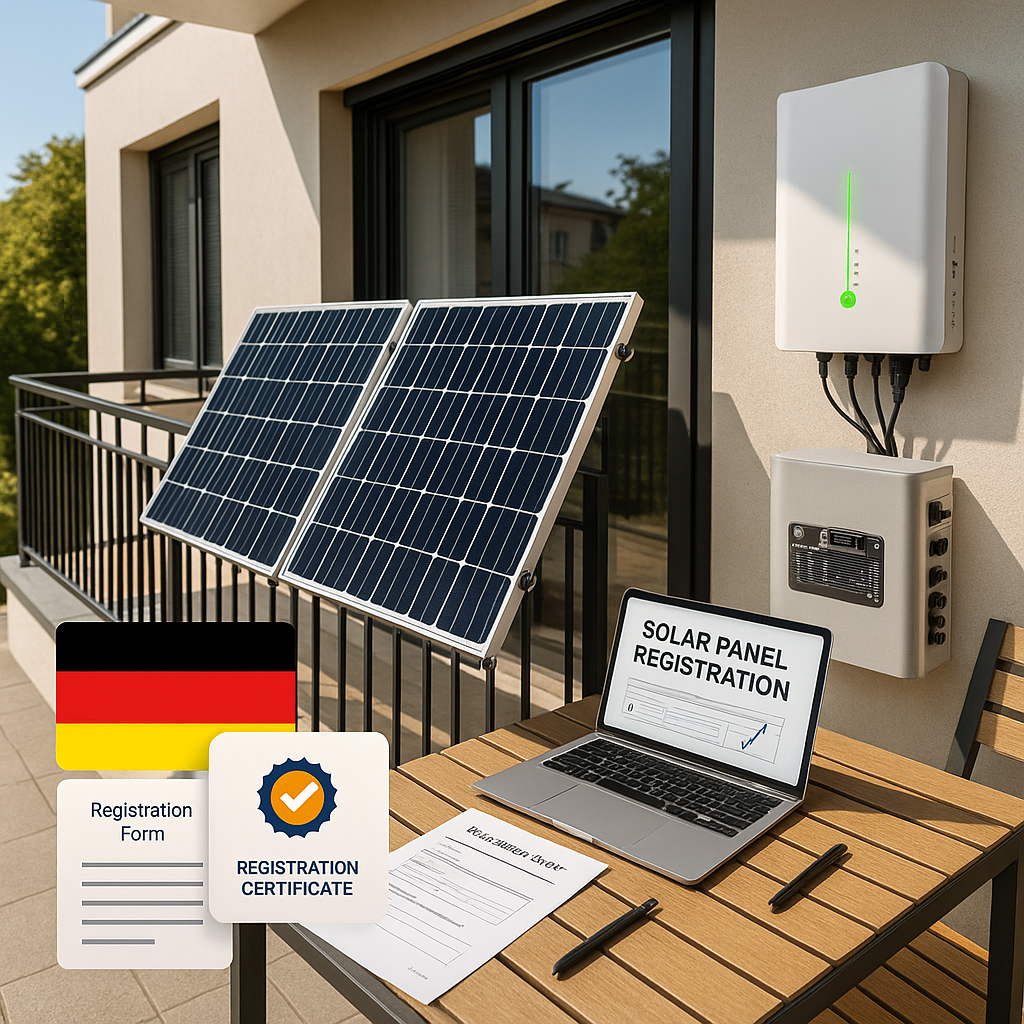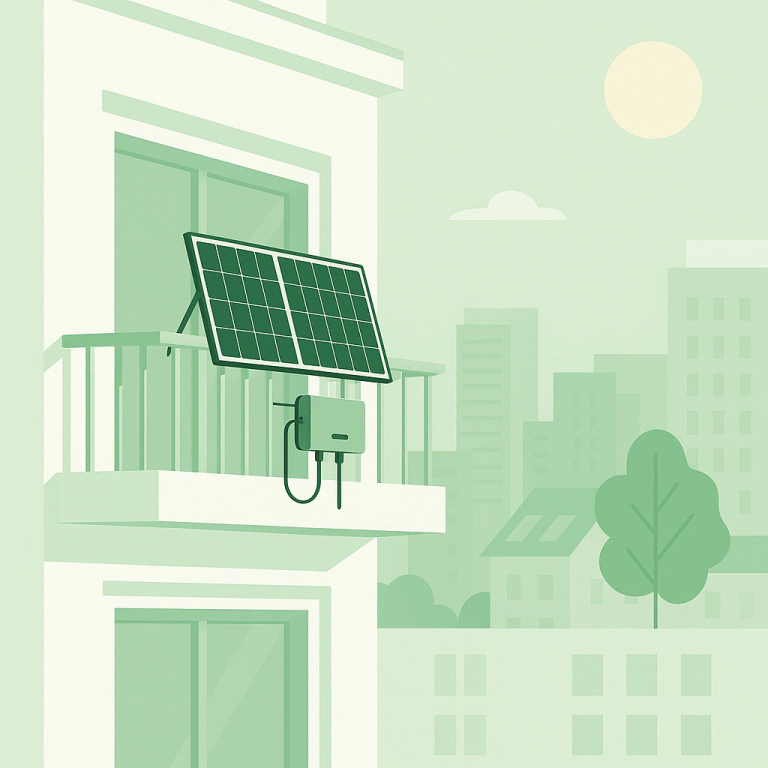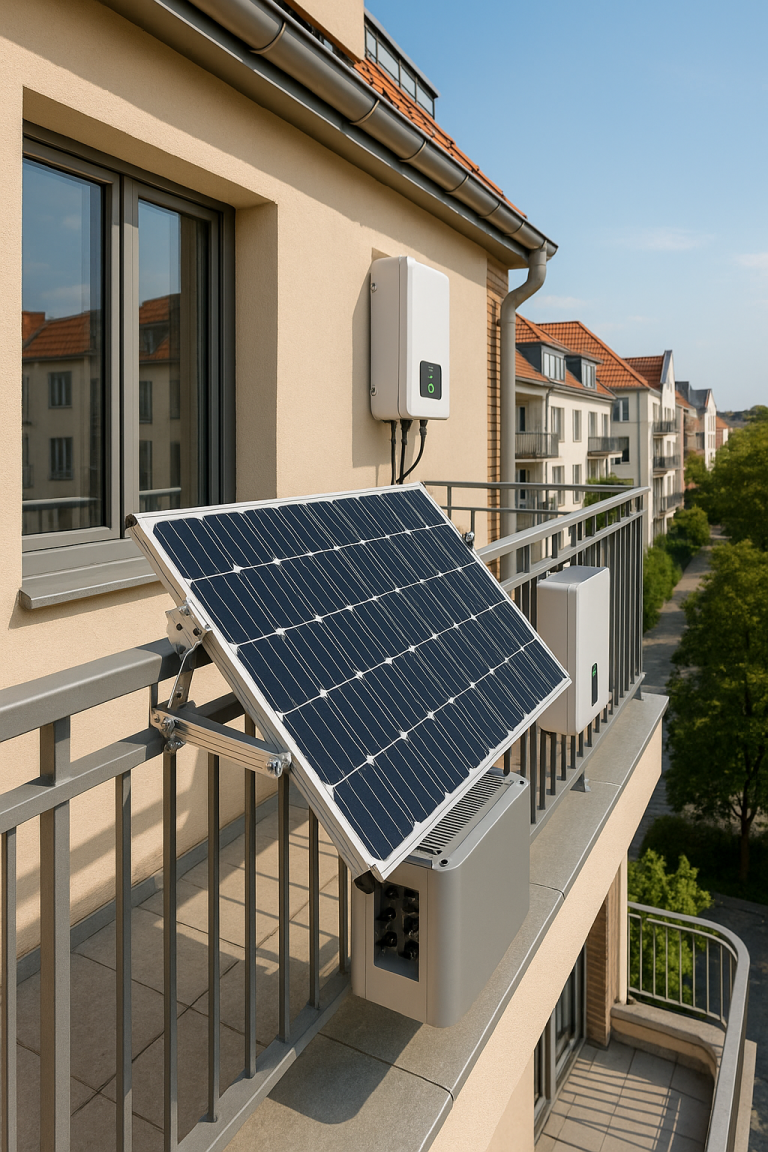🌞 Introduction: Why Registration Matters in Germany
In Germany, even a small plug and play solar system – like a balcony-mounted 600W or 800W setup – must be registered to comply with legal regulations. As of 2025, new updates make the process more streamlined, but also require stricter compliance with grid safety and notification laws.
Registering your system ensures:
- Legal operation under German energy law ⚖️
- Safety for the power grid and households ⚡
- Access to incentives or VAT exemptions 💶
This guide walks you step-by-step through the registration process for plug and play systems, tailored to homeowners and renters alike.
📋 Step 1: Understand Which Systems Require Registration
As of 2025, all grid-connected PV systems in Germany, including plug and play (Steckerfertige PV-Anlagen), must be registered if:
- They feed into the grid (even partially)
- The inverter power exceeds 600W (soon moving to 800W limit)
- They’re permanently installed
🧠 Tip: Portable or battery-only systems used off-grid may not require registration – but always verify with local authorities.
📝 Step 2: Register in the Market Master Data Register (MaStR)
The Marktstammdatenregister (MaStR) is the official national registry managed by Bundesnetzagentur.
🔗 Register here: MaStR Online Portal
To register:
- Create a user account (as natural person/private)
- Register your solar system as a “Photovoltaikanlage”
- Provide technical details: inverter model, peak power, location, grid operator
- Confirm operator details (you or landlord)
📎 Official Guide (German): MastR-PV-Anleitung PDF
📧 Step 3: Notify Your Grid Operator (DSO)
After MaStR, you must inform your local distribution system operator (Netzbetreiber) before or at installation.
Include:
- A completed commissioning notice
- Product datasheets (inverter, system specs)
- Declaration of VDE AR-N 4105 compliance
💡 Many plug and play kits like JYH-BPS1600 come pre-configured with CE and VDE documentation. Check our product compliance page for downloadable files.
✅ Step 4: Use a Certified Compliant Inverter
To be legally used in Germany, your solar kit must include a grid-compliant inverter (per VDE AR-N 4105 standard).
Recommended: JYH-Inverter Series (300W–1600W models) fully meet VDE 4105 specs and come with type approval.
📄 View JYH-Inverter Series Specs
🛡️ Step 5: Installation Safety and Fire Regulation
Although plug and play, Germany still requires:
- Use of certified connectors (Wieland or Schuko depending on state)
- No open cable runs
- Installation by qualified person if unclear
🏠 Apartment dwellers: some landlord/HOA consent may be needed. Refer to Tenancy Law on Solar Installations (in German).
🎯 Summary Checklist
- ✅ CE and VDE-certified inverter (e.g., JYH-Inverter)
- ✅ MaStR registration completed
- ✅ Grid operator informed
- ✅ Product data + declaration available
- ✅ Safe physical installation
🚀 Final Thoughts: Simpler, but Still Serious
In 2025, Germany is pushing solar forward with fewer bureaucratic hurdles – but that doesn’t mean skipping legal steps. Registering your plug and play kit ensures grid safety, legal peace of mind, and even cost savings.
Ready to install your CE-certified kit? Explore the JYH-BPS1600 Plug & Play Balcony Solar System designed specifically for German homes.
📦 Explore Product Page
📞 Need help? Contact our support team.




